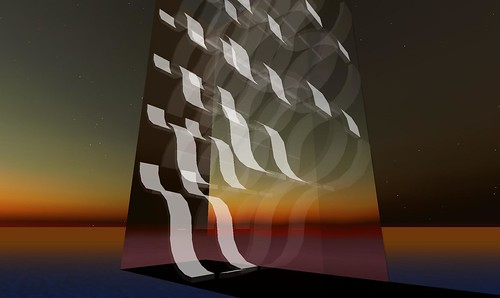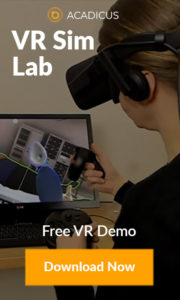(This is Andrew Liebchen’s essay submission to the Ctrl-Shift-07 competition on Lebenswelt Island – screenshots also by Andrew)
“Privately owned user-created content is one of the dividing lines between Second Life and other forms of the Metaverse. A strongly encoded and enforced sense of private property within Second Life protects the Linden Dollar, property-holders, and the marketplace. Like contemporary real life capitalist democracies, the mass of land-less public exists as a mob that brings currency in-world to for night-club owners, pimps, real-estate speculators, in-world bankers, and (eventually) Linden Labs to scoop up. Look no farther than the economic metrics for the month of May 2007 to see the disparities of the second economy: of the 1,104,083 residents who logged in the during that month, only 39,215 had a positive monthly flow of Linden Dollars, and 53% of those users made less than 10 USD.
Second Life’s mimicry of an ideal suburban American life does not stop at private property lines, it extends into the business baron’s attempted control of the economy. A question: can Linden Labs back the Linden Dollar with currency on hand? In fact, the Lab has yet to turn a profit. Is this because of the hundreds of thousands of dollars they should keep on hand in case of a run on the Linden Dollar? It is doubtful, although real currency hasn’t been backed by gold and silver for years. Fortunately, the value of the US Dollar is wrapped up in the complexities of the domestic and world economies, not a single entity like the Linden Dollar. To convert Linden Dollars to real currency for the few making a living in world, the Lab relies upon the masses consistently buying Linden Dollars.
Public spaces in world are created by Linden Lab (such as InfoHubs) are like civic spaces where public can gather to share the best place to buy clothes, gamble, find sex—places to spend their Linden Dollars. The formal content in these areas tend to be conservative, so most social activity occurs on private property. To combat the privatization of the public realm in Second Life, I propose that public space should be freed from the real life conventions of benches, pavilions, etc. Furthermore, public space must be an attraction that can compete with private casinos, nightclubs, and shopping malls. Public spaces should seek to empower the general public of Second Life with an activity not designed to enrich only the wealthiest users and the governing entity, Linden Labs.
The Social Collision Array proposes a new kind of public space for Second Life. First, it is modular; it is easily transferred, assembled, copied, and expanded as needed. While the form is mostly derived from programmatic needs, Second Life is a visual world, and so to lure users, the construct strives to be compelling, complex, and beautiful. Users choose to be randomly transferred from cell to cell by the Array, meeting other avatarusers. Social connections are made within the cells, avatars move through the array disoriented, each cell the same as the one before, only the contents of the cells—the
avatar-users—changes. Social connections are highlighted in an environment mostly devoid of the usual visual distractions. Users leave by randomly teleporting out, or navigating the maze of ramps down to their entry point. A sense of “analog” play is reintroduced into a world that tries to deny that its foundations are deep in digital computer games: Hide-and-Seek, funhouse mazes, Kick-The-Can.”


